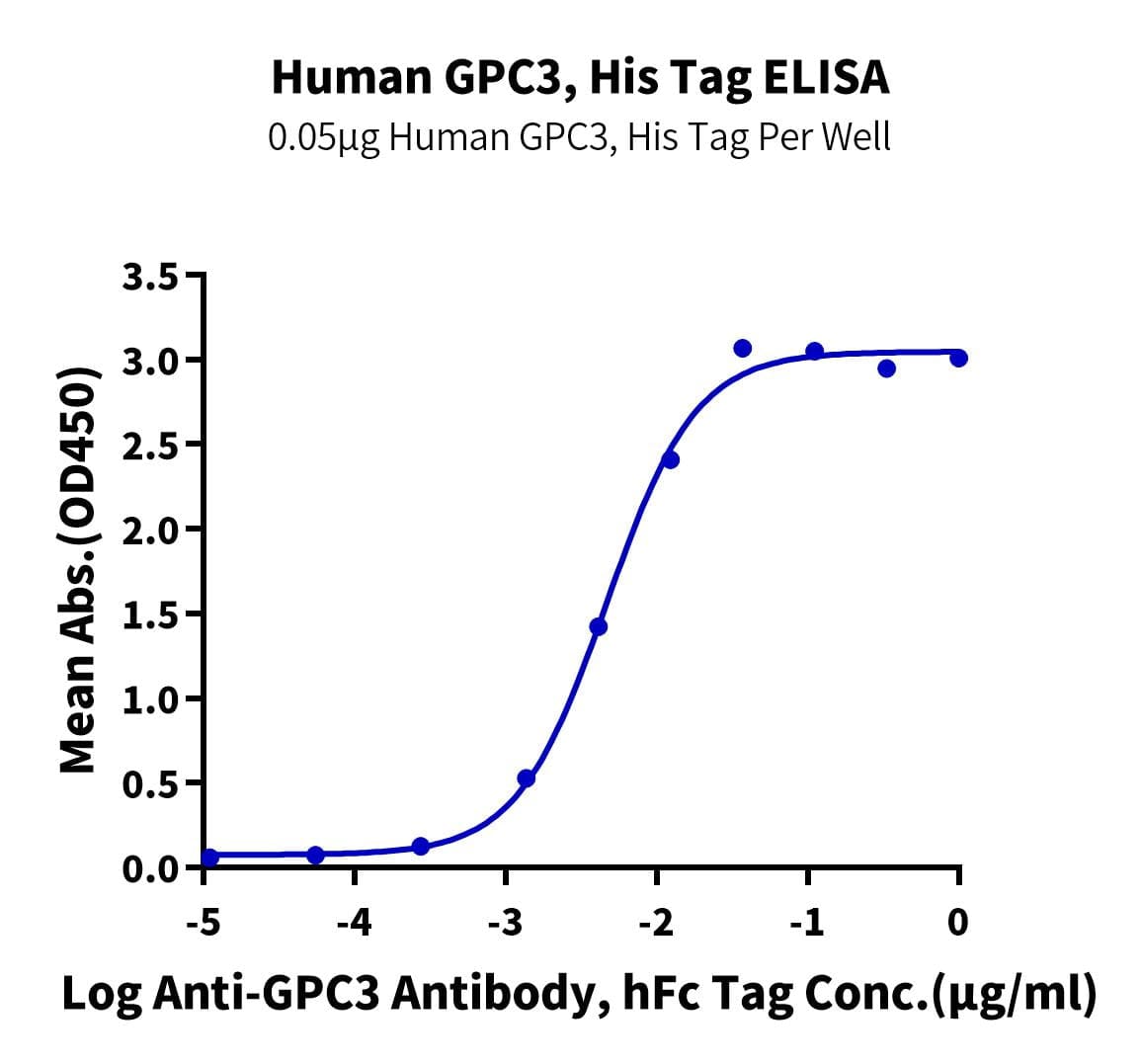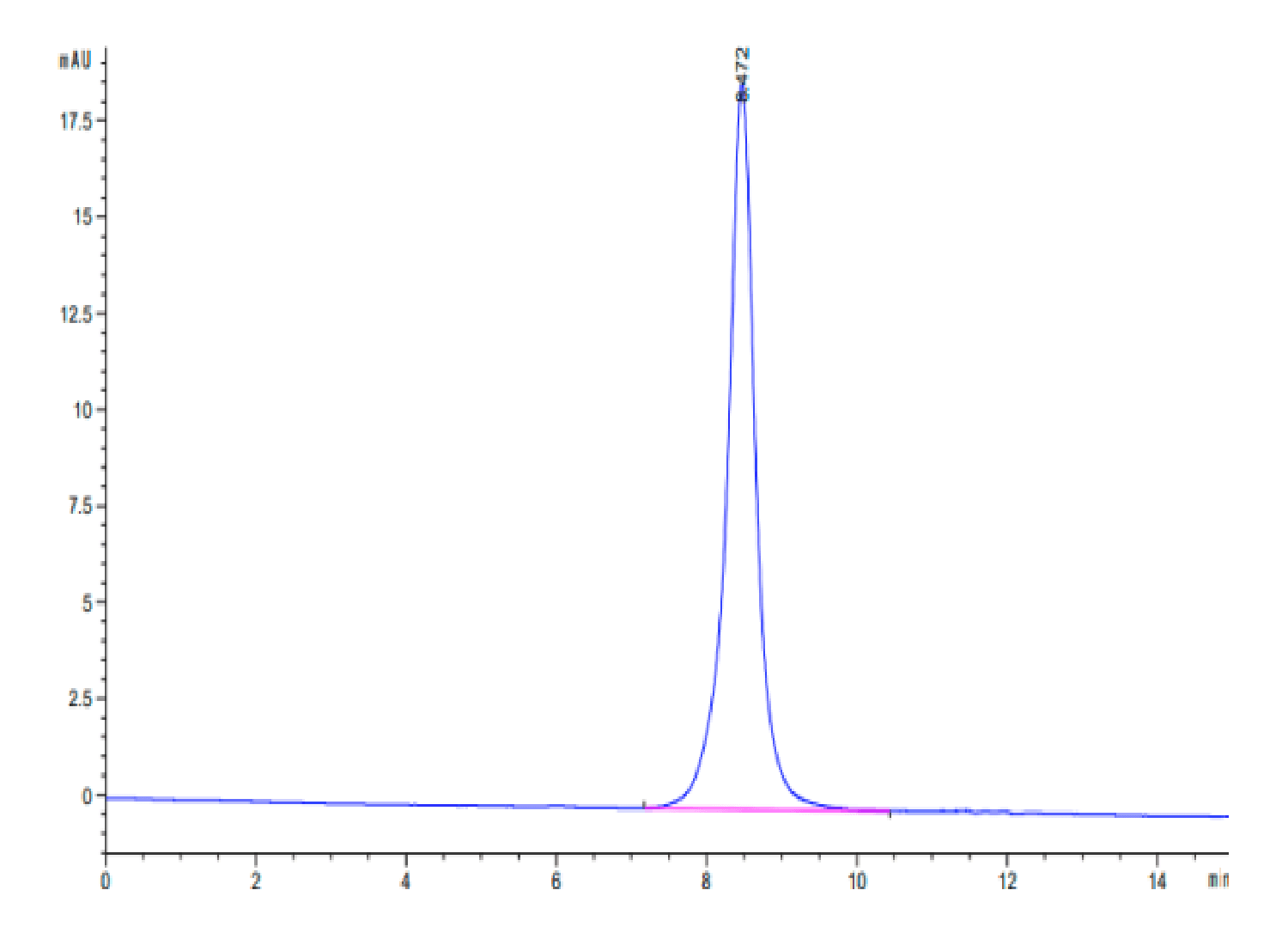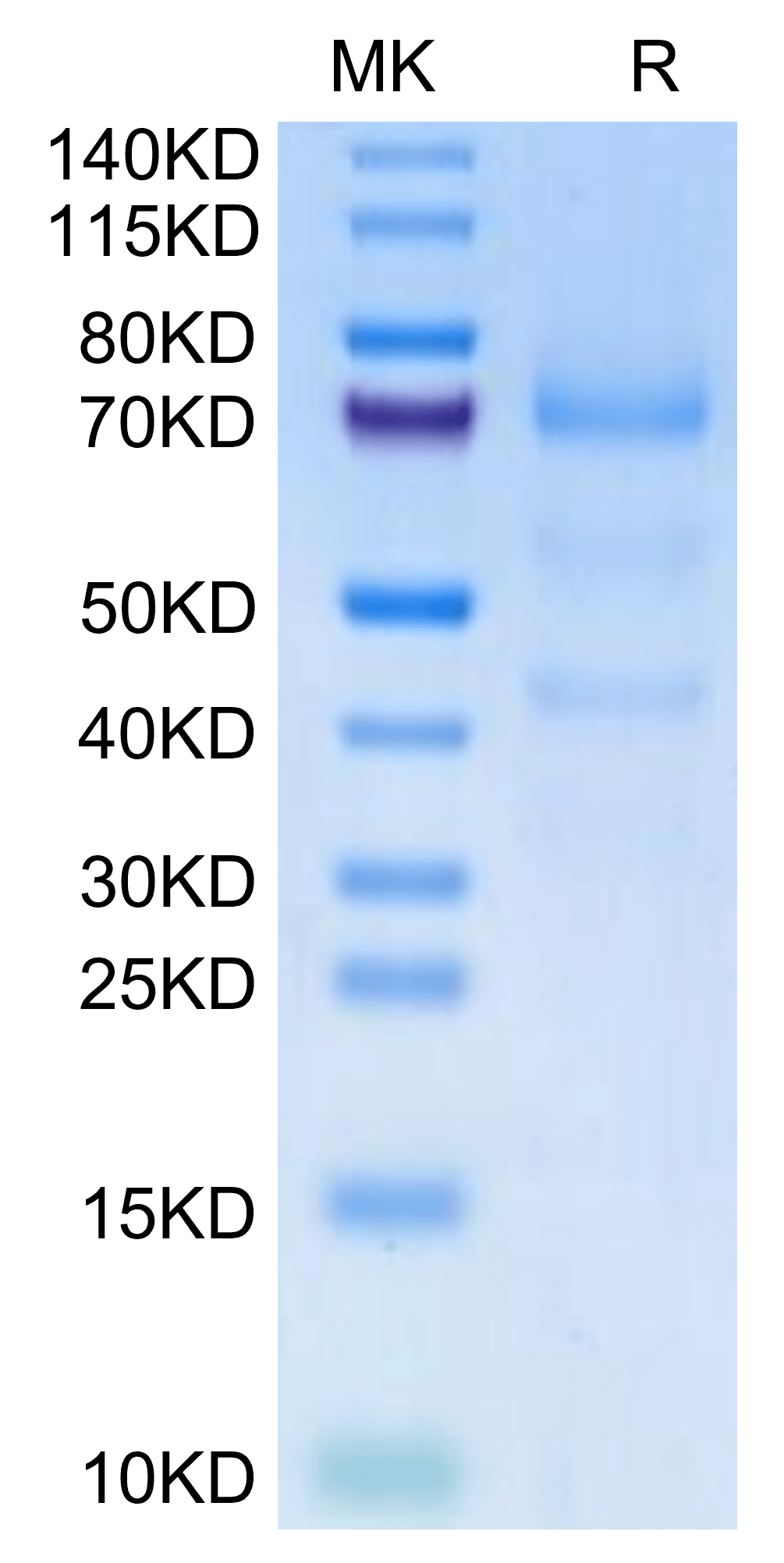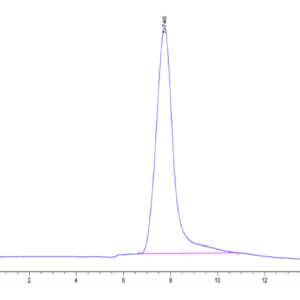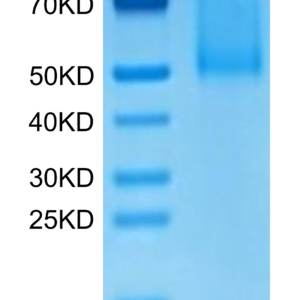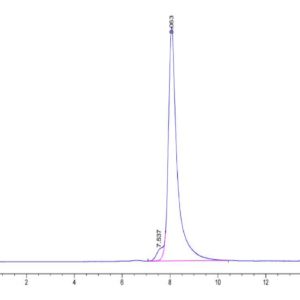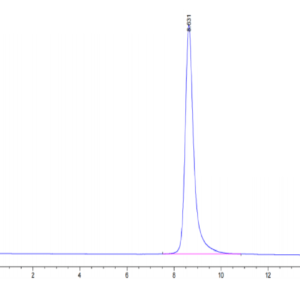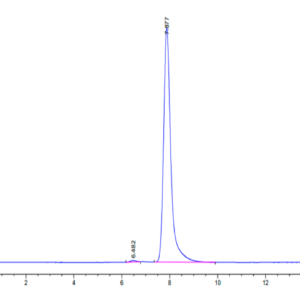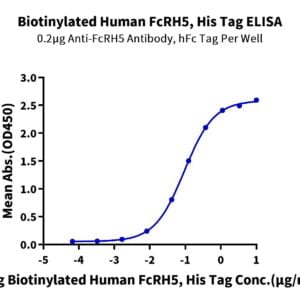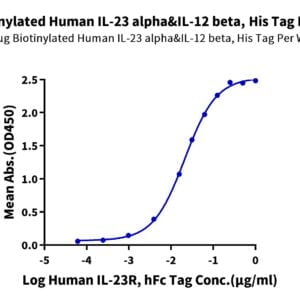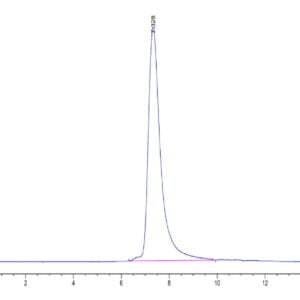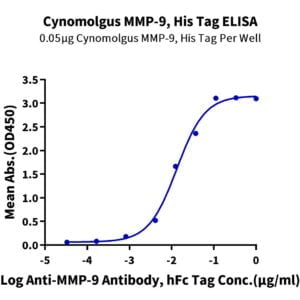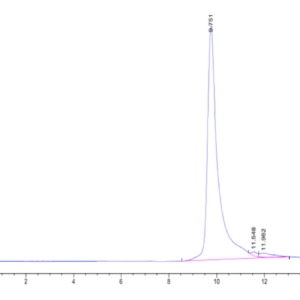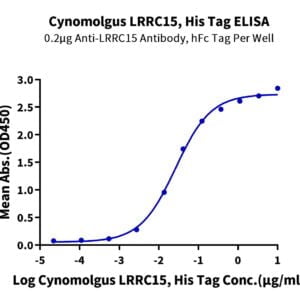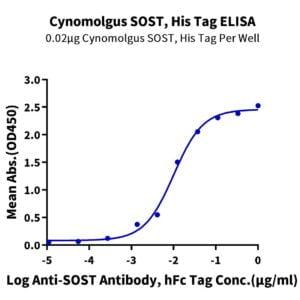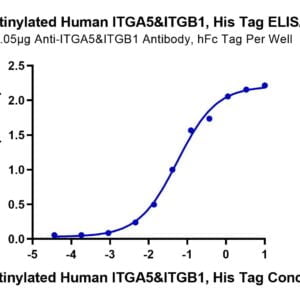| Weight | 1 lbs |
|---|---|
| Dimensions | 9 × 5 × 2 in |
| accession | P51654 |
| express system | HEK293 |
| product tag | C-His |
| purity | > 95% as determined by Tris-Bis PAGE;> 95% as determined by HPLC |
| background | Glypican-3 is a protein, which is encoded by the GPC3 gene in humans.The protein core of GPC3 consists of two subunits, where the N-terminal subunit has a size of ~40 kDa and the C-terminal subunit is ~30 kDa.Glypican 3 is a potential therapeutic target for treating liver cancer and other cancers. Several therapeutic anti-GPC3 antibodies have been developed. |
| molecular weight | The protein has a predicted MW of 61.6 kDa. Due to furin-like convertase cleavage site and glycosylation, the protein migrates to 42 kDa, 70-115 kDa based on Tris-Bis PAGE result. |
| available size | 100 µg, 500 µg |
| endotoxin | Less than 1EU per μg by the LAL method. |
Human GPC3/Glypican 3 Protein 4448
$240.00 – $800.00
Summary
- Expression: HEK293
- Functional: Yes (ELISA)
- Amino Acid Range: Gln25-His559
Human GPC3/Glypican 3 Protein 4448
| protein |
|---|
| Size and concentration 100, 500µg and lyophilized |
| Form Lyophilized |
| Storage Instructions Valid for 12 months from date of receipt when stored at -80°C. Recommend to aliquot the protein into smaller quantities for optimal storage. Please minimize freeze-thaw cycles. |
| Storage buffer Shipped at ambient temperature. |
| Purity > 95% as determined by Tris-Bis PAGE |
| target relevance |
|---|
| Glypican-3 is a protein ,which is encoded by the GPC3 gene in humans.The protein core of GPC3 consists of two subunits, where the N-terminal subunit has a size of ~40 kDa and the C-terminal subunit is ~30 kDa.Glypican 3 is a potential therapeutic target for treating liver cancer and other cancers. Several therapeutic anti-GPC3 antibodies have been developed. |
| Protein names Glypican-3 (GTR2-2) (Intestinal protein OCI-5) (MXR7) [Cleaved into: Glypican-3 alpha subunit; Glypican-3 beta subunit] |
| Protein family Glypican family |
| Mass 65563Da |
| Function Cell surface proteoglycan (PubMed:14610063). Negatively regulates the hedgehog signaling pathway when attached via the GPI-anchor to the cell surface by competing with the hedgehog receptor PTC1 for binding to hedgehog proteins (By similarity). Binding to the hedgehog protein SHH triggers internalization of the complex by endocytosis and its subsequent lysosomal degradation (By similarity). Positively regulates the canonical Wnt signaling pathway by binding to the Wnt receptor Frizzled and stimulating the binding of the Frizzled receptor to Wnt ligands (PubMed:16227623, PubMed:24496449). Positively regulates the non-canonical Wnt signaling pathway (By similarity). Binds to CD81 which decreases the availability of free CD81 for binding to the transcriptional repressor HHEX, resulting in nuclear translocation of HHEX and transcriptional repression (By similarity). Inhibits the dipeptidyl peptidase activity of DPP4 (PubMed:17549790). Plays a role in limb patterning and skeletal development by controlling the cellular response to BMP4 (By similarity). Modulates the effects of growth factors BMP2, BMP7 and FGF7 on renal branching morphogenesis (By similarity). Required for coronary vascular development (By similarity). Plays a role in regulating cell movements during gastrulation (By similarity). {ECO:0000250|UniProtKB:Q6V9Y8, ECO:0000250|UniProtKB:Q8CFZ4, ECO:0000269|PubMed:14610063, ECO:0000269|PubMed:16227623, ECO:0000269|PubMed:17549790, ECO:0000269|PubMed:24496449}. |
| Subellular location Cell membrane {ECO:0000269|PubMed:14610063}; Lipid-anchor, GPI-anchor {ECO:0000250|UniProtKB:P13265}; Extracellular side {ECO:0000250|UniProtKB:P13265}. |
| Tissues Detected in placenta (at protein level) (PubMed:32337544). Highly expressed in lung, liver and kidney. {ECO:0000269|PubMed:32337544, ECO:0000269|PubMed:8589713}. |
| Structure Heterodimer; disulfide-linked (PubMed:14610063). Cleavage by a furin-like convertase results in production of alpha and beta chains which form a disulfide-linked heterodimer (PubMed:14610063). Interacts with DPP4 (PubMed:17549790). Interacts with FGF2 (By similarity). Interacts with WNT5A (PubMed:14610063). Also interacts with WNT3A and WNT7B (PubMed:16227623). Interacts with hedgehog protein SHH; the heparan sulfate chains are not required for the interaction (By similarity). Also interacts with hedgehog protein IHH (By similarity). Interacts with CD81 (By similarity). Interacts with Wnt receptors FZD4, FZD7 and FZD8; the heparan sulfate chains are required for the interaction (PubMed:24496449). {ECO:0000250|UniProtKB:P13265, ECO:0000250|UniProtKB:Q8CFZ4, ECO:0000269|PubMed:14610063, ECO:0000269|PubMed:16227623, ECO:0000269|PubMed:17549790, ECO:0000269|PubMed:24496449}. |
| Post-translational modification O-glycosylated; contains heparan sulfate and/or chondroitin sulfate. {ECO:0000269|PubMed:14610063, ECO:0000269|PubMed:32337544}.; Cleaved intracellularly by a furin-like convertase to generate 2 subunits, alpha and beta, which remain associated through disulfide bonds and are associated with the cell surface via the GPI-anchor (PubMed:14610063). This processing is essential for its role in inhibition of hedgehog signaling (PubMed:25653284). A second proteolytic event may result in cleavage of the protein on the cell surface, separating it from the GPI-anchor and leading to its shedding from the cell surface (PubMed:14610063). {ECO:0000269|PubMed:14610063, ECO:0000269|PubMed:25653284}. |
| Target Relevance information above includes information from UniProt accession: P51654 |
| The UniProt Consortium |
Data
Publications
Publications
| pmid | title | authors | citation |
|---|---|---|---|
| We haven't added any publications to our database yet. | |||
Protocols
| relevant to this product |
|---|
Documents
| # | ||
|---|---|---|
| Please enter your product and batch number here to retrieve product datasheet, SDS, and QC information. | ||
